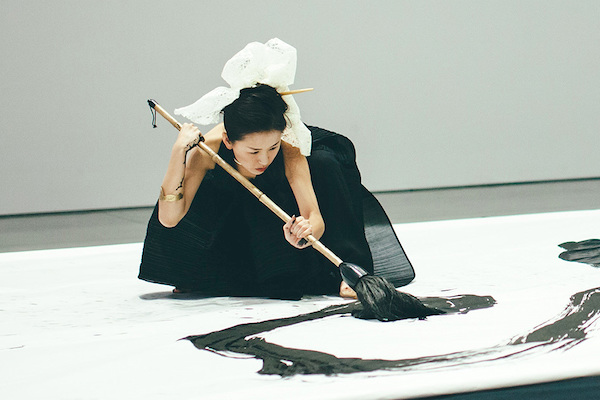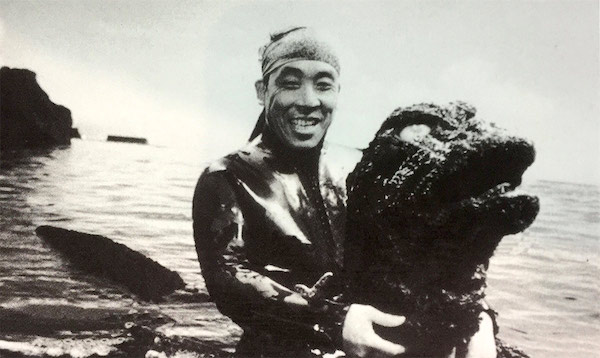When Wanderlust Meets a Flagging Libido: Japan, with a Side Trip to Sri Lanka
“After the Japanese national soccer team lost in the 2018 World Cup in Moscow, they left their locker room spotless with a note thanking the Russians for their hospitality. After all, the players had been educated in schools where they spent 15 minutes each day doing custodial work.”—Skip Eisiminger
Skip the B.S.
By Dr. Skip Eisiminger

I. “I wouldn’t mind a little bow. In Japan, they bow. I love it. Only thing I love about Japan.”—Donald Trump
CLEMSON South Carolina—(Weekly Hubris)—November /2019—With “Japan” still scrawled in fading ink across the top of my bucket list, this gaijin fully expects that the closest I’ll come to visiting the place is the interior of my Toyota, which was assembled in Tennessee.
I won’t say I grew up hating “the Nips”—after all, it was “the Krauts” who were shooting at my father— but when I learned that he’d volunteered for the invasion of the Japanese mainland after Hitler’s defeat, the Japanese emperor and Hirohito went directly to my enemy list. And because President Truman’s decision to use nuclear weapons probably saved my father’s life, I have never criticized the president’s moral calculations.
Watching Victory at Sea as a teen in the 1950s with a friend whose father had firebombed Tokyo, and listening to the father of another friend whose shoulder had been broken by a skidding Zero fighter as it barreled across the deck of his carrier just deepened the resentment I felt toward all things Japanese. Decades since the war ended, I still must resist the urge to squeeze off a few “rounds” when I pull up behind a stopped Mitsubishi. As soon as I remember I’m driving the fourth Toyota that has never given me any serious trouble, the urge disappears.
My opinion of the Japanese began to shift when my father returned from the Korean War by way of Tokyo. Several of the stories he told of geishas and cherry blossoms sounded as if they’d been lifted from the R and R stories set in Japan I later heard on “M.A.S.H.” My father’s brother, who’d lived most of his life in California before and after a stint in the Navy, informed me of the ugly treatment Japanese Americans had received following Pearl Harbor. One small grocery in Uncle Floyd’s Long Beach neighborhood had signs posted as early as 1942 reading, “Japs keep moving,” even though many of these potential customers were American citizens by birth.
By chance, four of my colleagues at Clemson had served in the Pacific Theater during World War Two. Ed Freeman had played a sousaphone in a military-occupation band. Ben Skardon was a POW of the Japanese for three years. Claire Caskey had served in Japan as an MP after the war. And Morris Cox had served as a Japanese translator during the war. From Ed, I learned that Japanese society resembles an “anthill.” From Ben, I learned that the enemy had bayonetted several of his friends for “the crime of pausing by the wayside.” From Claire, I learned that Japanese women would hold their husband’s ashtrays and toddle up behind them in their kimonos when an ash grew too long. And Morris told our entire department once that after years of studying some 5,000 Japanese kanji and interrogating Japanese prisoners, “I never had an original thought in that labyrinth of a language.”
But the friend who turned me solidly pro-Japanese was Dave Schuler, an Oberlin graduate and army buddy, who gifted me with Harold Henderson’s An Introduction to Haiku. Sixty years later, it still occupies an honored place on my bookshelves. On its inside back cover, I scrawled my first haiku:
“Cashew and sumac,
members of the same family—
tut, tut, think of that.”
I stole that last line from Basho, but he’s welcome to reclaim it.

II. “What’s beautiful about Godzilla is, of course, it’s in every way a symbol of Japan dealing with the aftermath of the atomic bombs . . . .”—Victor LaValle
But long before Hiroshima and Nagasaki, a home-grown Godzilla roamed Japan, for every nation has some poisonous berries in the nut mix. Incidentally, Hitler was so impressed with this mixture that he made the Japanese “honorary Aryans.” It was this narrow segment of Japanese society that sacrificed nearly three thousand young men in the kamikaze program, slaughtered 100,000 innocents in Manila, raped thousands more in Nanking, cut off thousands of Korean ears, sucker-punched Pearl Harbor, and allowed 27 percent of American prisoners to die in POW camps while 4 percent died in German camps.
The only personal evidence I have of the sumac and Godzilla that grow and lurk respectively in the shadow of Mt. Fuji is a story told by a former student. Tamiko, I’ll call her, told me that from the first grade on her father demanded perfection. If she brought home a 98, she was struck two times; if she brought home a 99, one blow fell. It was only when she brought home a perfect score that she was not bruised by a man she once loved.

III. “My husband and I went to Japan for our honeymoon, but if you look at the presentation of the food, it’s ridiculous. It looks like a Mondrian painting . . . . Everything looks like a bunch of Hello Kitty erasers when you eat a bento box. It’s so precise, beautiful, processed, and neat.”—Ali Wong
Another Clemson colleague, Dr. Ito, a laconic Japanese native who taught architecture, was a dedicated marathoner and played the Spanish guitar with near-Segovian skills. After I learned he’d designed and was building a Japanese-style home on a wooded lot overlooking Lake Keowee, I asked him how the construction was progressing.
“67 percent!” he said.
About a month later, when I saw him and his wife at a Christmas party, I asked again how the construction was progressing.
“91 percent!” he said.
A year later, when I noticed that the Ito home was on a charity home tour, I knew construction was “100 percent!” Blessed with so many single-minded people like Dr. Ito, it’s no wonder that Nippon Steel and other Japanese companies must turn off the electricity and lock their doors on Sundays to keep employees from coming to work.
Japanese efficiency is ripe for parody but, in some cases, reality surpasses parody. Take “Japanese Efficiency,” a real company that hires and trains actors to play the part of wealthy children and grandchildren who are too busy to visit their parents, oftentimes living in the same town. A three-hour visit costs the absentee child $1,150. At the same time, 40 percent of Japanese workers, a quarter of whom routinely work 60-hour weeks, acknowledge they are working themselves to death, an increasingly common phenomenon known as karoshi, or “death by overwork,” a pathology which claims about 2,000 lives a year. Those seeking help for their obsessions may be disappointed to learn that in Tokyo, population 14 million, the Harper’s Index (June 1988) reported that there were four psychiatrists. In New York City, population 8.6 million, one may find four psychiatrists on any given block.
But it’s in the judicial system that the Japanese are most obsessively efficient. The police may arrest anyone on suspicion of a crime and detain them for as long as 23 days. The success rate of the prosecutors is a suspiciously high but extraordinarily efficient 99 percent. But there’s nothing suspicious about the fact that the Japanese chances of being murdered by someone with a gun are one in ten million contrasted to 31 in one million for Americans. Stated another way, in 2017, 42 Americans on average were killed by guns every day; between 2010 and 2017, 44 Japanese were killed by guns in that entire eight-year period.
Given their efficiency and industriousness, it’s no wonder that Asians, who comprise about 2 percent of the American population, comprise 27 percent of the student body at the University of California, Berkeley. It’s less surprising when one considers that Japanese high-schoolers do 20 hours of homework a week compared to about four hours for American youth. Pico Iyer, a British writer with Indian parents who was brought up in California and who has lived in Japan for nearly 30 years with his Japanese wife, summed up his situation as follows, “I’m very happy to be a foreigner in Japan, and I can’t think of a more wonderful place to live, but at the same time, I would never want to be Japanese, because they are subject to stresses that I am not.”
Where acting out and acting up are often treated as a crime, and wa (harmony) is esteemed, even the cats are walked on a leash.

IV. “In Japan, I was immensely impressed by the politeness . . . of the Japanese people.” —J. Paul Getty
In the “Land of the Rising Sun,” the inhabitants have apparently evolved to the point that they have no body odor. Jaywalkers and visiting foreigners who have not lost their scent glands are considered “ill.” On those remote, densely populated islands where ikebana, bonsai, sushi, sashimi, origami, Noh, Samurai swords, and Zen Buddhism originated, one should not be surprised to find that the Japanese have 17 recycling categories to the Germans’ four. (In Clemson, my wife and I separate paper from all the rest.) When glitches in their renowned rail system occur, the average delay is a mere seven seconds. When an All Nippon Airways flight is delayed, the counter clerks bow to their customers as they apologize.
Even Japanese machines are polite. Some high-rise apartment elevators have an umbrella icon that flashes if it’s raining and a toilet for emergencies. Premium commercial toilets mask any rude sounds, wash, blow dry, massage, and perfume the posterior. I’ve heard that Toto engineers are working on a toilet that will pull up your drawers—just a rumor.
Finally, after the Japanese national soccer team lost in the 2018 World Cup in Moscow, they left their locker room spotless with a note thanking the Russians for their hospitality. After all, the players had been educated in schools where they spent 15 minutes each day doing custodial work.

V. “The German noun Fernweh may be defined as the feeling of homesickness for a place you’ve never been.” —The Wordspinner
A Japanese proverb states, “The journey is the reward, not the destination.” Clearly, that anonymous author did not shadow my wife and me on our last trip overseas. Long story short, the trip reminded us that “travel” derives from “travail,” a three-pronged instrument of torture. Torn between hodophobia, the fear of travel, and dromomania, the passion to travel, I searched for and found what for me was an acceptable compromise. Shortly after retiring from teaching, I volunteered for Clemson’s “Conversations with International Students” program. CIS matches a foreign graduate student, who wishes to improve his or her English skills before teaching a lower-level course or lab, with a native speaker like myself.
In my most recent experience this fall, I met with a young woman from Sri Lanka in the lobby of the Clemson Library. In our first hour-long meeting, I learned:
- Sri Lanka is variously known as the “Pearl of the Indian Ocean,” or, “The Teardrop of India.”
- Her father is retired from the military that defeated the Tamil Tigers ending the civil war.
- Her mother is an elementary school teacher.
- Her brother is an engineering student in China at a school in which all his classes are taught in English.
- Her country was the first in the world to have a female prime minister.
- Shaking the head from left to right means, “I agree with you.”
- The island is malaria free.
- Elephants and other wild animals decamped to higher ground about an hour before the tsunami devastated much of the coast in 2010.
- And her family has a papaya and rambutan tree in her backyard. Beyond that, is a cricket pitch.
In what bar or hotel lobby could I learn as much about Japan or any other country from a stranger on our first “date”? Rewarding as CIS has been for me, I look forward to the day when I can safely teleport to Columbo or Kyoto.

To order copies of Skip Eisiminger’s Letters to the Grandchildren (Clemson University Digital Press), click on the book cover below or contact: Center for Electronic and Digital Publishing, Strode Tower, Box 340522, Clemson SC 29634-0522. For Wordspinner: Mind-Boggling Games for Word Lovers, click on the book cover.



